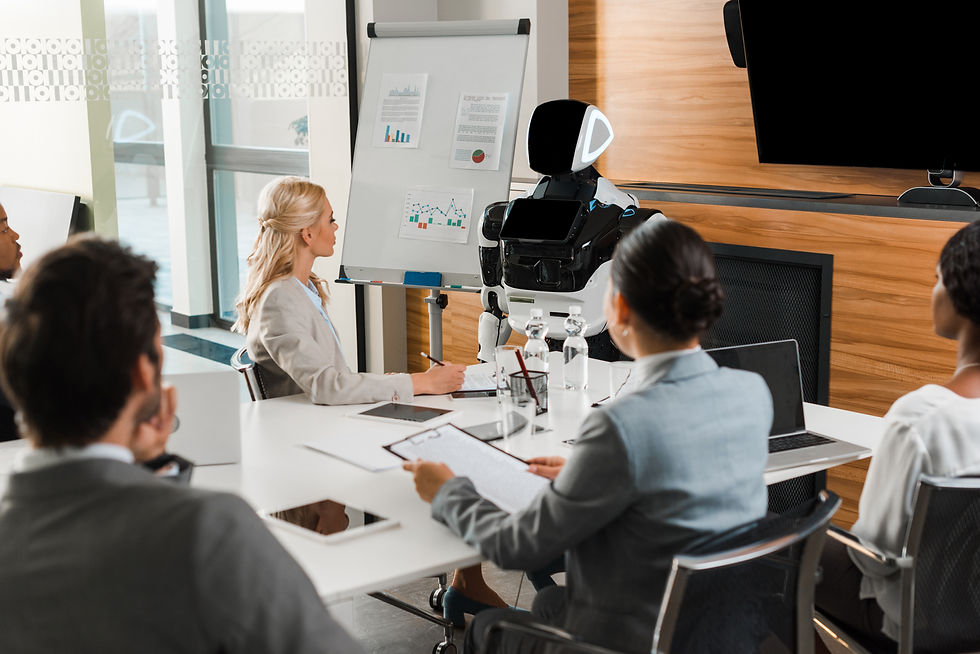As technology continues to advance, there’s an ongoing debate about AI’s role in replacing human workers, especially in fields like marketing and public relations.

During a conversation at South by Southwest Sydney (SXSW), AZK Media’s Managing Director Azadeh Williams and renowned marketing leader Oksana Koriakova discussed the impact of AI on these professions, shedding light on what AI can and can’t do – and more importantly, what humans bring to the table that machines can’t replicate.
The creativity factor: What sets humans apart from AI?
AI can generate creative ideas, but can it be truly creative?
Oksana echoes the sentiment of Albert Einstein: “Creativity is seeing what others see and thinking what no one else ever thought.”
In other words, AI cannot replicate creativity because it’s incredibly unique to each human individual – differentiating us from AI.
As automation and AI tools gain traction in industries like marketing, there’s a rising concern that these technologies could replace jobs. Oksana argues, however, that if you’re worried about AI taking over your role, maybe creativity is not your strongest suit and you shouldn’t be in that role to begin with.
AI excels at processing vast amounts of data, identifying patterns and automating repetitive tasks. It can certainly help marketing and PR professionals generate content quickly or provide insights on trends. But when it comes to crafting truly original, emotionally resonant stories or building personal connections with an audience – this is where humans shine.
“Creativity and soul come from humans. We have seen this massive shift go from ‘masses’ to ‘me’, bringing personalisation and a sense of human connection back,” Oksana says.
AI is a powerful tool to kickstart your ideas
Rather than viewing AI as a threat to jobs, the speaker encourages marketing and PR professionals to see it as a powerful tool that can enhance creativity and productivity. Whether you’re struggling with writer’s block or looking for a fresh idea, AI can serve as an idea generator. It can analyse trends, suggest topics, and even help with drafting content – but it still requires a human touch to refine, contextualise and make it resonate with a specific audience.
This is where humans excel: we can take the raw material AI provides and transform it into something meaningful, relevant, and emotionally engaging. Creativity involves intuition, empathy, and a deep understanding of human experiences – all qualities that AI, for all its capabilities, cannot replicate.
The gender divide: Who's using AI and why?
A 2024 Slack survey of more than 10,000 “desk workers” found that Gen Z men are 25% more likely to have tried AI tools compared to Gen Z women. Overall, more men are trying AI than women, with 35% of male respondents saying they’ve tried AI for work, compared with 29% of female respondents.
“Statistically, males use [AI] much more than females. I was surprised about that!,” Oksana says.
This highlights an area for further exploration: how can we encourage broader adoption of AI across different demographics, and how might this shape the future of work in creative industries?
AI has certainly opened up new possibilities for marketing and PR professionals, but Oksana was quick to point out that it’s still very much in the experimental phase. Companies are testing new tools and exploring different ways to integrate AI into their strategies. The marketing industry, in particular, is in the midst of an exciting marketing experiment as brands figure out how best to leverage AI to meet the demands of modern consumers.
Serving a human population with a shrinking attention span
In a world where attention spans are shrinking, creativity is the secret sauce to stop consumers scrolling past.
Did you know the average attention span for the ill-focused goldfish is nine seconds? According to a Microsoft Corp study, humans have a shorter attention span than goldfish.
In 2000 as the dot.com boom disrupted the world, humans’ attention spans were, on average, 12 seconds. In 2015 (only 15 years later), that figure decreased to eight seconds – and is shrinking as our world continues to digitise.
For smaller brands, this statistic is an important piece of the puzzle. Without the massive budgets and recognition of larger companies, small brands must rely on their creative strategies to define their voice and capture the attention of potential customers.
This is where AI can play a role – helping brands generate ideas quickly and experiment with different content – but ultimately, the creativity behind the brand must come from the unique talent of humans.
AI does the heavy lifting, humans do the heavy thinking
So, what’s the key takeaway? AI is a tool – an incredibly powerful one – but it cannot replace the core human qualities that make marketing and PR professions so unique. AI may be able to generate content, analyse data and automate tasks, but it will always be up to humans to inject creativity, personal connection and intuition into the work.
The future of marketing will be a collaboration between humans and AI: where AI enhances productivity and efficiency, while humans bring the magic of creativity that AI can’t replicate.
As we continue to explore the potential of AI, especially in creative industries, the real value lies in how we use it. As Oksana emphasises in the interview, it’s not about fearing AI’s impact on jobs but rather about experimenting with new tools and figuring out how they can amplify human creativity.
The result? A more dynamic, innovative, and personalised approach to marketing and PR – one that remains rooted in the unique talents only humans can offer.
Authored by Jessica Phillips, Senior Social Media and Communications Specialist at AZK Media.
Comentários